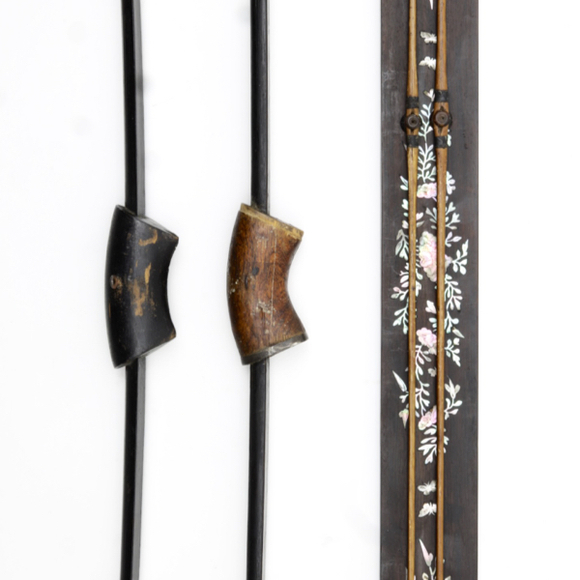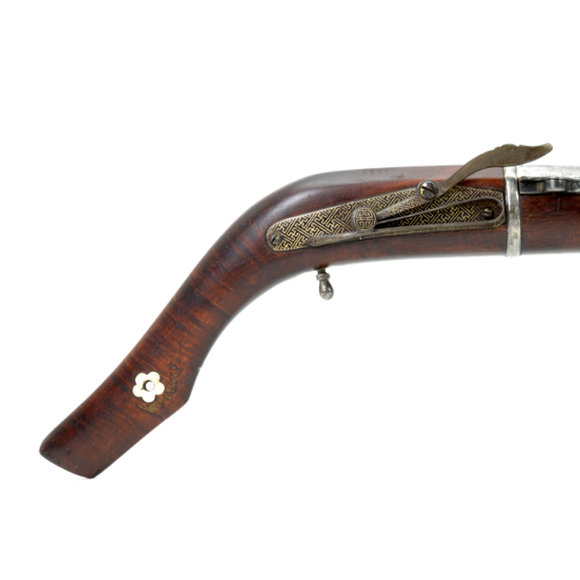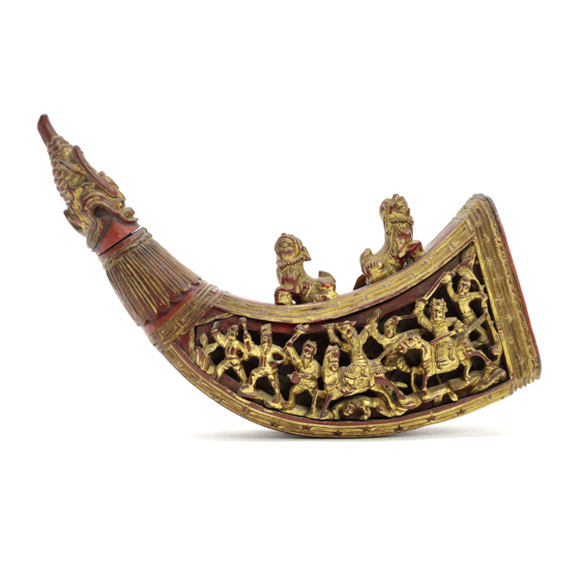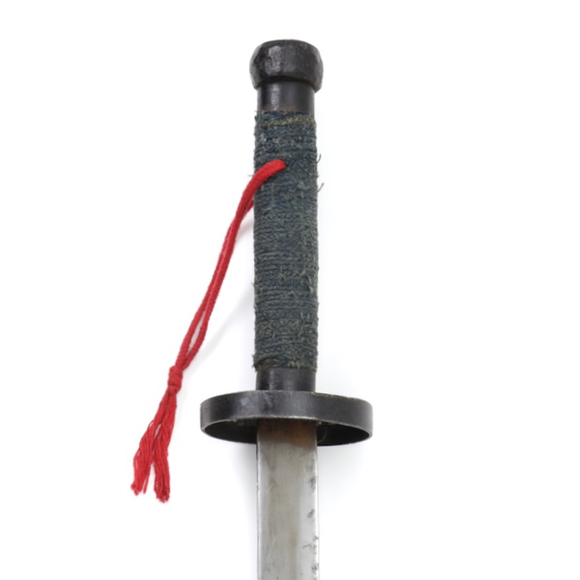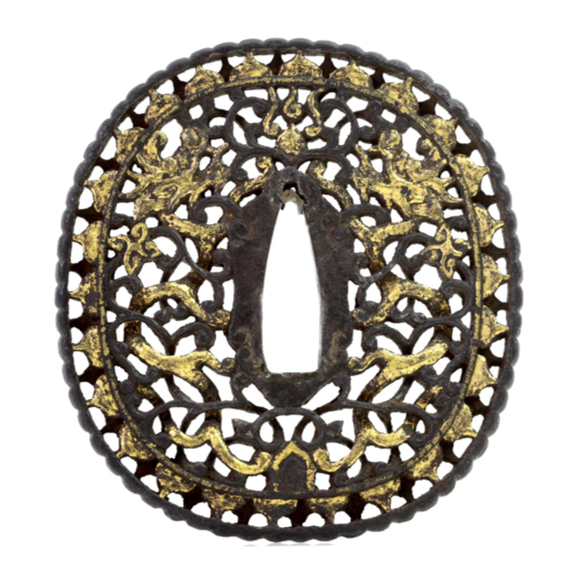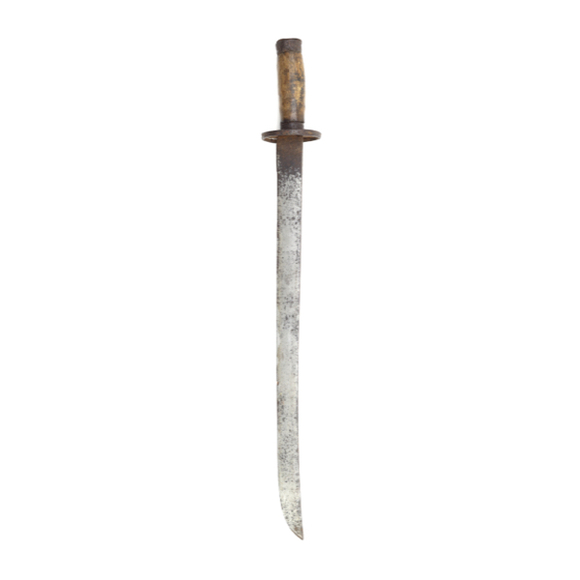Language: Mandarin Chinese
Source: Period dictionary
Description
The gōng shāo (弓弰) is the rigid section at the end of a composite bow. In English, also called "bow ear". In the Qing dynasty, the composite bows used were of Manchu design with characteristically long shāo.
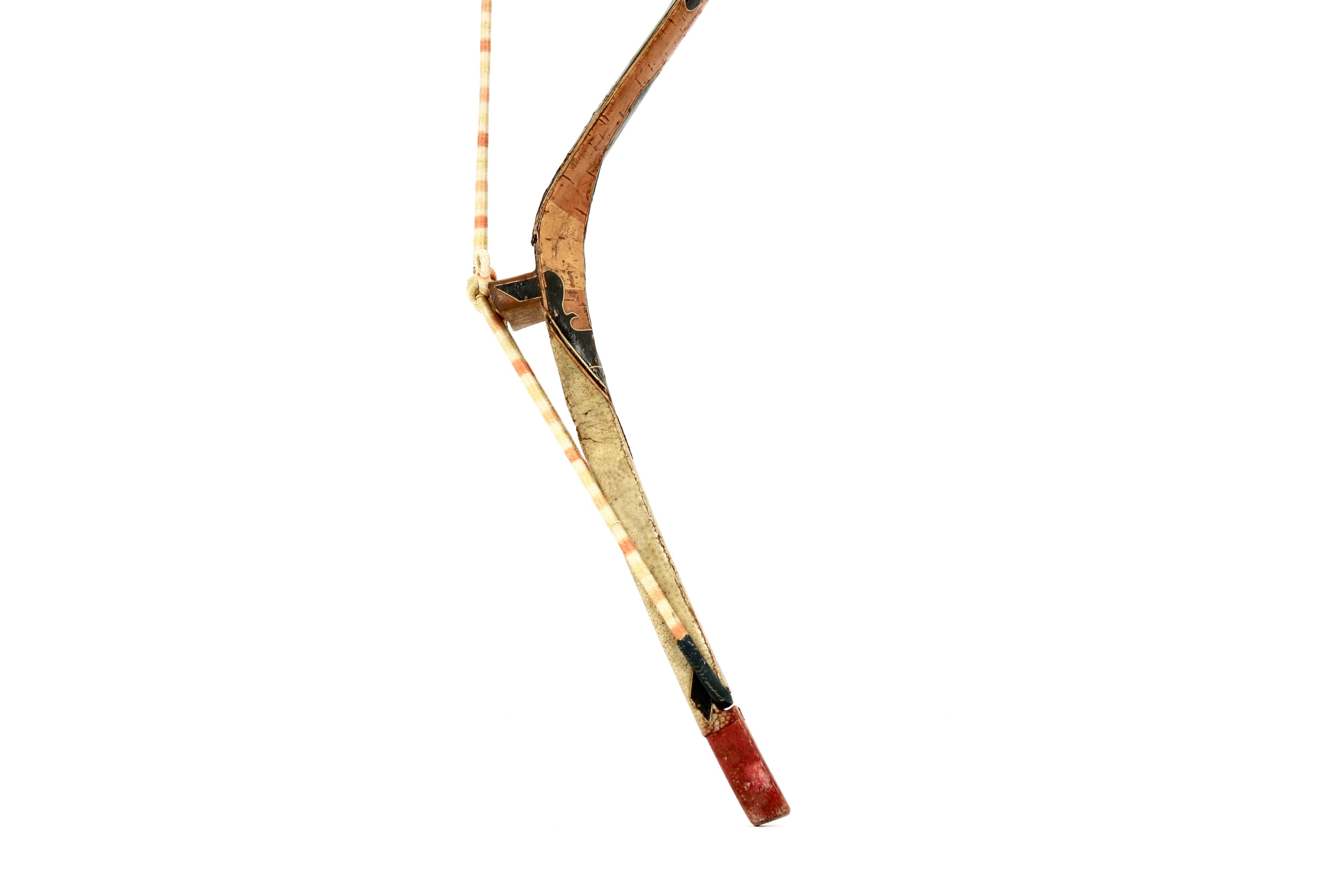
The characteristically long ear of a composite bow of the Qing dynasty.
Sold by Mandarin Mansion in 2019.
Purpose of ears
Bow ears help bend the limbs of the bow. From a design perspective, a longer rigid section at the end of a bow can help bend a thicker and stronger limb while using the same force as with which a shorter eared bow bends a less substantial limb. In practice, this usually makes a longer eared design better capable of launching heavier arrows. On the downside, the longer ear is dead weight that can reduce the amount of acceleration in the limb. In other words: Long-eared bows tend to be slower.
The above is just a generalization. Many other factors are at play, like ear angle, presence of string bridges, grip setback, etc.
Other terms
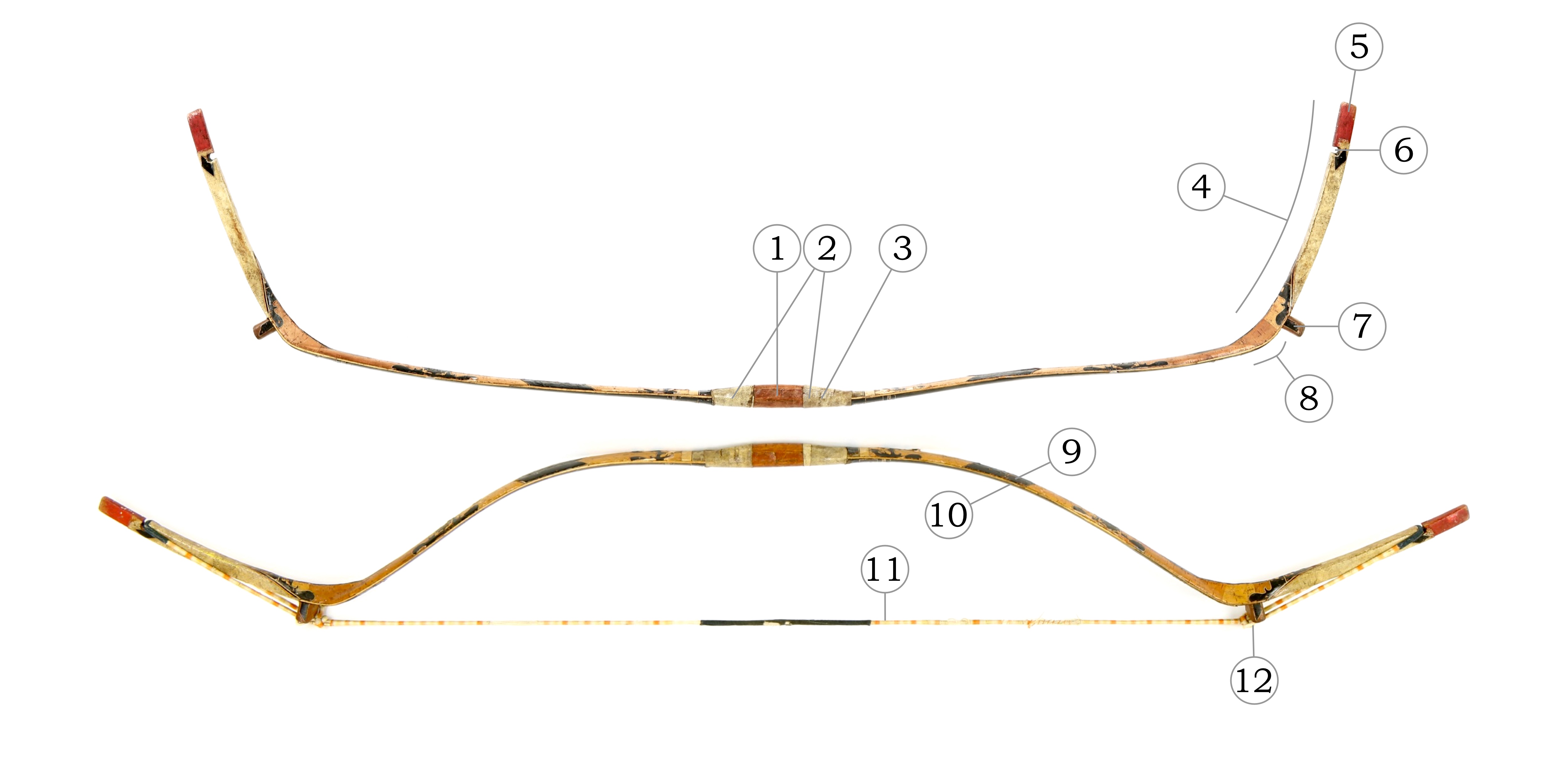
|
# |
English |
Chinese |
Pinyin transliteration |
| Bow | 弓 | Gōng | |
| 1. | Bow grip | 弓弝 | Gōngbà |
| 2. | Sides of bow grip | 弓弝膀子 | Gōng bà bǎngzi |
| 3. | Arrow slipping spot | 箭溜子 | Jiàn liūzi |
| 4. | Bow ear | 弓弰 | Gōng shāo |
| 5. | Tip | 弰頭 | Shāo tóu |
| 6. | String notch | 扣子 | Kòuzi |
| 7. | String bridge | 弓墊子 | Gōng diànzi |
| 8. | Bow knee (lit. "brain") | 弓腦 | Gōng nǎo |
| 9. | Painted birch bark | 畫樺皮 | Huà huà pí |
| 10. | Bow face | 弓面 | Gōng miàn |
| 11. | Bowstring | 弓弦 | Gōng xián |
| 12. | Bowstring knot | 弦挌搭 | Xián gé dā |
Notes
All terms are from the Wuti Qingwen Jian (五體清文鑑)or "Five Languages Mirror", a Qing imperial dictionary in Manchu, Mongolian, Uighur, Tibetan and Chinese of circa 1790. Commissioned by and published under the Qianlong emperor.

